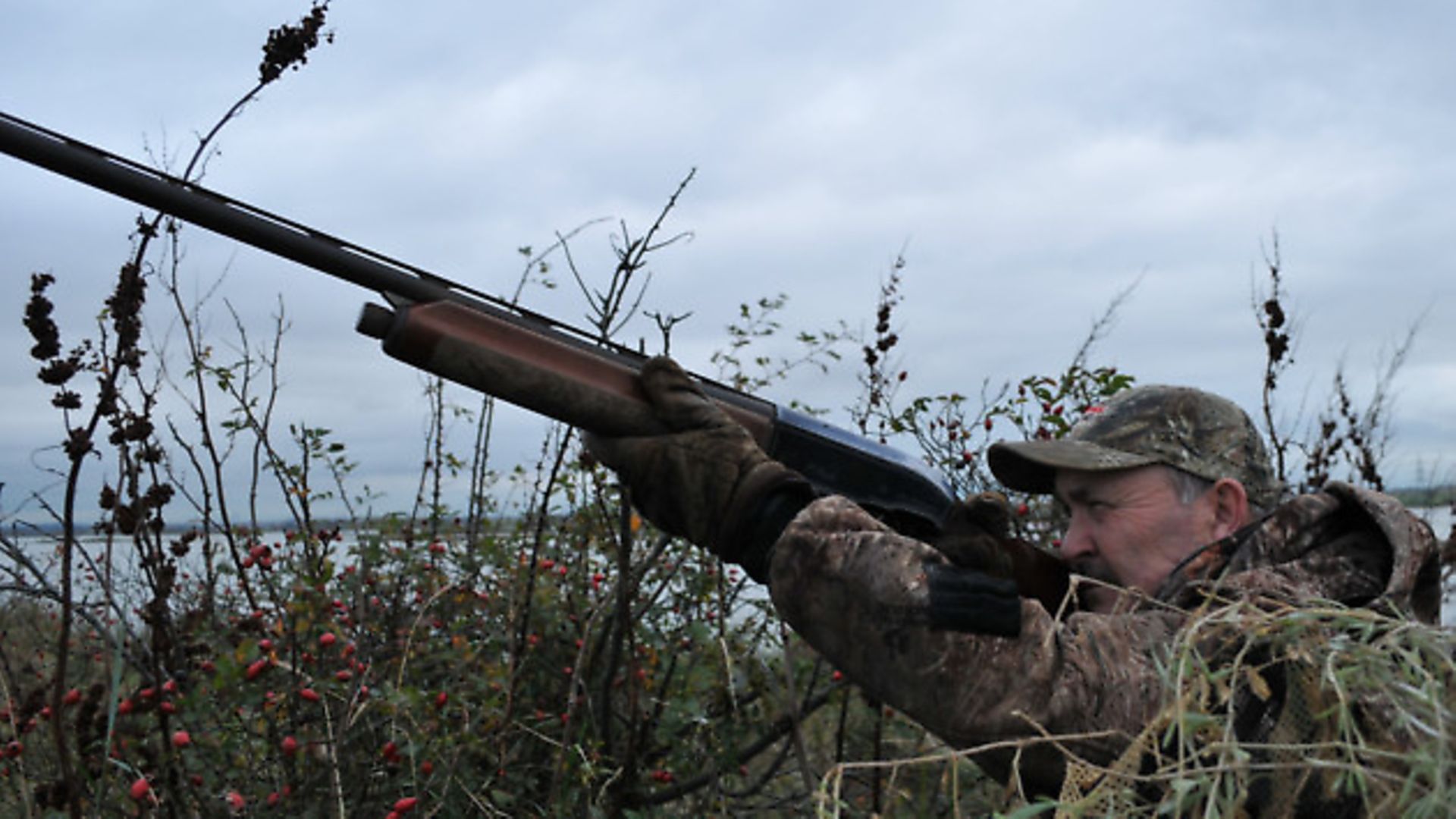The 2012/13 season was a challenge for even experienced wildfowlers, says Alan
 credit: Dom Holtam
credit: Dom Holtam
There are two main reasons why this season has proved difficult: incessant rainfall, meaning that there is plenty of choice for the birds, coupled with a noticeable lack of migrant birds.
In my area, a shortage of teal has been a major factor in reducing sporting opportunity. In a normal year teal make up about 50% of my bag, but this year it is not much above 30%.
Over the years I have noticed that it is somewhat cyclical – a bumper teal year is often followed by a poor year. Whether this is due to breeding success or other factors I cannot say, only that fewer teal on the east coast means poorer sport.
The notorious short-stopping – with birds staying on the Continent instead of coming straight through to the UK – is perhaps a contributory element in this.
When faced with this sort of dilemma there are a number of options: stay at home and cry into your beer, continue to go out regardless, hoping that things will improve or, best of all, read the conditions and seize on any likelihood that things have changed for the better.
Watching the weather forecasts for high pressure and dropping temperatures is essential at such times. If areas of pale blue – freezing conditions – appear on the weather maps of Holland then there is every chance that birds will soon be frozen out of their wintering grounds in Europe and head to the relatively warmer climes of our shores.
In order to maximise chances of success, those freezing conditions need to arrive here too. A few days of hard frost – preferably with temperatures staying at or below zero, night and day – will usually do the trick.
One day the inland marshes may resemble a series of giant shallow lakes, but a few days hence they will be a sheet of ice. This has the effect of driving duck out of the food-rich inland marshes onto the shore, and thereby opening up opportunities to the wildfowler.
When the small pond in my garden has been frozen for a couple of days, there is a fair chance that birds will be using the saltmarshes. Then is the time to try those spots which have been historically good for me, and the chances of a few shots becomes greatly enhanced.
Earlier this season I took our editor Dom out to some of the islands in the Medway Estuary. It is a favourite spot of mine, but conditions need to be right, and as our 9-hour vigil for three duck proved, conditions on that trip were not ideal.
Last February that exact spot produced tremendous sport. It was not out of the blue, but as a result of the conditions being exactly right and of course an understanding of what those conditions needed to be.
Everything needed to combine perfectly in order to maximise opportunity: freezing conditions, the right time and height of tide and, crucially, wind strength and direction. All those combinations came together and the scene was set.
It had been freezing for several days, which meant that the inland flashes had long since frozen and even the ditches and deeper waters were glazed over. The prevailing south-westerly wind had swung round to the east, and the wind direction would make all the difference on those saltmarshes.
Getting out well before the tide was essential, as it would allow plenty of time to build a hide and set decoys; under such conditions, birds can sometimes start to move as soon as the first fingers of grubby brown water run into the creeks. On this day that is precisely what happened.
Even by going down onto the last piece of scant cover, it was difficult to get close enough for a shot at the first birds following the water. However, by the time the water was up to the edge of the saltings, there were a handful of teal in the bag.
It was due to be a big tide, which meant that the decoys were set in the lee of the islands in what would be sheltered water. The hide was high up against a ridge on one of the islands and from there it was possible to shoot down at birds flashing past.
It was a perfect wildfowling scenario, and one for which I had prepared with a store of local knowledge assembled over the years. Even so, the need to be adaptable to changing circumstances came to the fore.
At high water, with the tide breaking the low ridge link between adjacent islands, the teal began to pass wide of me. After this had happened several times, I knew it was time for a change.
Fortunately it was possible to wade across the flooded ridge to marginally higher ground, and by lying down with the dogs beside me, it was possible to use a tiny scrap of cover to remain unseen to low, incoming birds.
There then followed some 20-minutes of fantastically exciting shooting as teal came low across the water directly for my new position. Sitting up to fire caused the little birds to explode upwards and around me, and it was the highlight of the day.
Coming off with a good bag of teal was enormously satisfying, and it was all thanks to reading the conditions and knowing the marshes. It was also as a result of remaining flexible and adapting to changing circumstances, even during the day itself.
By Alan Jarrett